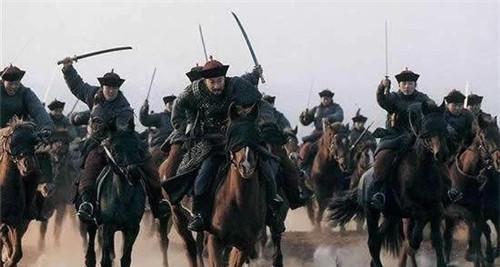Gu Yanwu, a thinker in the late Ming and early Qing dynasties, wrote in a poem: "Once you hold scissors, cut me half bald." The Chinese are ruined, and it is better to live than to die. This poem is written about the resistance in people's hearts when the Qing army entered the customs and issued a shaving order to ask the people of the whole country to change the Han hairstyle to a Manchu hairstyle.

In our impression, the hairstyle of Qing Dynasty men is "yin and yang head", that is, kicking off the first half of the hair, leaving only the second half woven into long braids hanging behind the head. But in fact, this is the false reality that the TV series has created for us, and in most of the Qing Dynasty, men are not the image of yin and yang heads.
In 1644, the Ming General Wu Sangui led the Qing army into the customs, the capital beijing was occupied, and from then on the Manchus began to rule the whole country, and soon after, the Qing Dynasty issued a shaving order, which caused dissatisfaction throughout the country, and because the regime was not yet secure, it was not smoothly implemented. The following year, Dorgon again issued a shaving order and a change of obedience order, which clearly stipulated: "Since the officials and the people have shaved their hair, it is appropriate to follow the system of this dynasty." ”
In the "Filial Piety Sutra", it is written that the skin of the body is received by the parents. This is the Han people followed the ritual customs of thousands of years, and shaving hair was an unacceptable thing for the people at that time. People everywhere rose up to resist and were suppressed by the Qing army, and the appalling Yangzhou Ten Days and Jiading Three Massacres occurred during this period.
The reason why the Qing Dynasty also practiced the shaving of the hair of the whole people at any cost was because they regarded this act as a sign of the people's submission to the Qing Dynasty and to Manchu rule. So what exactly was the shaving standard implemented in the early Qing Dynasty? In the "Seven Peaks Remains", it is recorded that the Manchu hairstyle is a small top of money, also known as the money rattail.
As the name suggests, the top of the Manchu's head leaves only a hair the size of a copper coin, braided into a small braid that hangs down, and the thickness of the braid is standard for being able to pass through the hole in the middle of the copper coin. If the area of hair stored is larger than a copper coin, he will be executed. In the fourth year of Shunzhi, a hushuguan civilian named Ding Quan was arrested by the magistrate because the hair on the top of his head was larger than the copper coin.
He wrote a fold and appealed it to the Shunzhi Emperor, and as a result, the emperor casually glanced at it and approved five big words: "Cut off the other place." Not only was Ding Quan beheaded, but even his family, nearby neighbors, and even local county officials were punished with joint and several responsibility. This incident did play a role in killing chickens and monkeys for other people, and people could only shave their hair strictly according to the standard.
The money rattail was used until the Qianlong period, and in the paintings of Alexander's painters sent by the British to visit in 1793, qing dynasty men were still strictly copper coin size hair bunches. By the Jiaqing period, the requirements for hair growth were gradually relaxed, and in the painting volume of the "Qing Customs Chronicle", the area of hair on the top of the man's head was already the size of a palm.
The real yin and yang head appeared, and it was already 200 years after the Qing army entered the customs. During this period, because the Qing Dynasty has been established for a long time, there is no longer any worry about the rebellion of the people and the rebellion of the remnants of the Ming Dynasty, and after all, the Manchus used to shave their hair only because they often hunted, and their hair was less easy to clean, and now there is no such hidden worry. Therefore, for the sake of beauty, only a small part of the hair was shaved off later, but most of it was left. Although the two are the same braid head, the difference in appearance is still very large.
As for why the Qing Palace drama did not truthfully shoot according to the changes in the hairstyles of the Manchus in history, the main reason is that the money rattail is too ugly, and the male actor whose appearance is against the sky cannot withstand such a test. In order to allow the audience to return their attention to the plot later, they all adopted the yin and yang braided head that existed in the late Qing Dynasty.